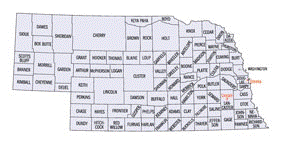Geography Program

Geography Program: Faculty Publications
Document Type
Article
Date of this Version
10-1995
Abstract
This presentation considers the various historical processes that have shaped ethnic identities in South Asia, concentrating, because of limitations of time and space, on India and on the postindependence period. It also discusses specific bases for establishing ethnic identities and the periods, situations, and locales in which they assumed importance. It also notes the means by which ethnic groups seek to advance their interests and by which governments respond to such efforts. I shall not, however, strive for completeness -- the topic is simply too vast. Omitted from consideration here is any discussion of ethnic relations in Afghanistan, Sri Lanka, and Nepal. Even for India, I shall do no more than touch lightly on the two most troublesome contemporary ethnic problems: the Sikh struggle for an independent Khalistan and the complex struggle in Kashmir being waged simultaneously by forces seeking independence, on the one hand, or merger with Pakistan on the other. [Dr. Schwartzberg]
I am going to try to achieve two things: first, integrate content with what Alex Murphy said yesterday about general principles through an illustration in South Asia, using Sri Lanka as an example and, second, build upon what Dr. Schwartzberg has said about the background of ethnic diversity in South Asia, but giving a slightly different prediction about India's political future. [Dr. Stoddard]


Comments
Published in THE CHALLENGE OF ETHNIC CONFLICT TO NATIONAL AND INTERNATIONAL ORDER IN THE 1990S: GEOGRAPHIC PERSPECTIVES: A CONFERENCE REPORT. September 30 - October 1, 1993. Sponsored by the Central Intelligence Agency's Geographic Resources Division. Published October 1995, as RTT 95-10039.